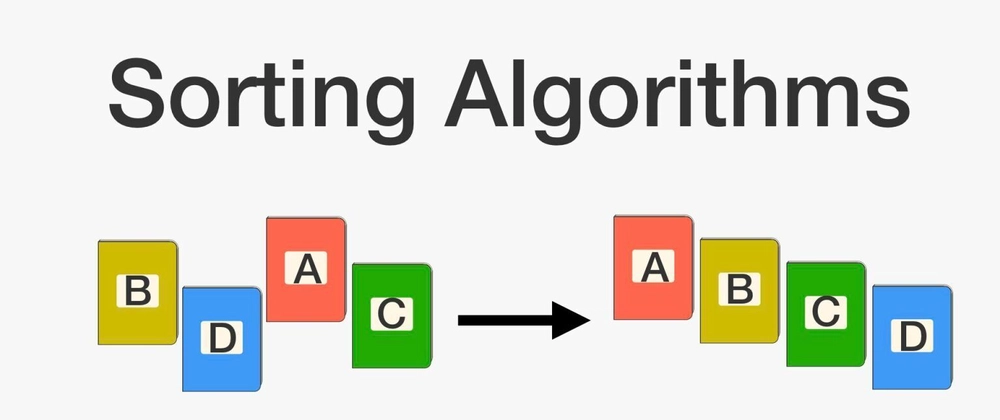Sorting is one of the most fundamental concepts in computer science. Whether you're a student, job seeker, or just a curious dev, understanding sorting algorithms is essential.
In this post, I'll break down the most popular sorting algorithms — Bubble Sort, Merge Sort, Quick Sort, Insertion Sort, Selection Sort, and Heap Sort — using simple Python examples and visuals in mind.
🔄 1. Bubble Sort – The Slow but Steady One
How it works:
Bubble Sort repeatedly compares and swaps adjacent elements if they are in the wrong order.
def bubble_sort(arr):
for i in range(len(arr)):
for j in range(len(arr) - 1 - i):
if arr[j] > arr[j + 1]:
arr[j], arr[j + 1] = arr[j + 1], arr[j]
return arr
📌 Time Complexity: O(n²)
📌 Space Complexity: O(1)
📌 Best used for: Small datasets and educational purposes.
🧩 2. Merge Sort – Divide and Conquer FTW
How it works:
Split the list in half, recursively sort each half, and merge them back together in order.
def merge_sort(arr):
if len(arr) <= 1:
return arr
mid = len(arr) // 2
left = merge_sort(arr[:mid])
right = merge_sort(arr[mid:])
return merge(left, right)
def merge(left, right):
result = []
i = j = 0
while i < len(left) and j < len(right):
if left[i] < right[j]:
result.append(left[i])
i += 1
else:
result.append(right[j])
j += 1
result.extend(left[i:])
result.extend(right[j:])
return result
📌 Time Complexity: O(n log n)
📌 Space Complexity: O(n)
📌 Best used for: Large datasets that need stable sorting.
⚡ 3. Quick Sort – The Speed Demon
How it works:
Choose a pivot, then split the list into elements less than and greater than the pivot. Recursively sort both parts.
def quick_sort(arr):
if len(arr) <= 1:
return arr
pivot = arr[0]
less = [x for x in arr[1:] if x <= pivot]
greater = [x for x in arr[1:] if x > pivot]
return quick_sort(less) + [pivot] + quick_sort(greater)
📌 Time Complexity:
Best/Average: O(n log n)
Worst: O(n²) (rare case)
📌 Space Complexity: O(log n)
📌 Best used for: General-purpose sorting, fast in practice.
📥 4. Insertion Sort – Best for Nearly Sorted Data
How it works:
Build the sorted array one item at a time by inserting each element into its correct position.
def insertion_sort(arr):
for i in range(1, len(arr)):
key = arr[i]
j = i - 1
while j >= 0 and key < arr[j]:
arr[j + 1] = arr[j]
j -= 1
arr[j + 1] = key
return arr
📌 Time Complexity: O(n²)
📌 Space Complexity: O(1)
📌 Best used for: Small or nearly sorted arrays.
🔍 5. Selection Sort – Simple but Inefficient
How it works:
Find the minimum element in the unsorted part and move it to the beginning.
def selection_sort(arr):
for i in range(len(arr)):
min_idx = i
for j in range(i + 1, len(arr)):
if arr[j] < arr[min_idx]:
min_idx = j
arr[i], arr[min_idx] = arr[min_idx], arr[i]
return arr
📌 Time Complexity: O(n²)
📌 Space Complexity: O(1)
📌 Best used for: Simple educational use cases.
⛏️ 6. Heap Sort – Uses a Heap Data Structure
How it works:
Turn the array into a max-heap, repeatedly extract the maximum element and heapify the remaining.
def heapify(arr, n, i):
largest = i
left = 2 * i + 1
right = 2 * i + 2
if left < n and arr[left] > arr[largest]:
largest = left
if right < n and arr[right] > arr[largest]:
largest = right
if largest != i:
arr[i], arr[largest] = arr[largest], arr[i]
heapify(arr, n, largest)
def heap_sort(arr):
n = len(arr)
for i in range(n // 2 - 1, -1, -1):
heapify(arr, n, i)
for i in range(n - 1, 0, -1):
arr[i], arr[0] = arr[0], arr[i]
heapify(arr, i, 0)
return arr
📌 Time Complexity: O(n log n)
📌 Space Complexity: O(1)
📌 Best used for: Time-efficient and memory-constrained tasks.
🧠 Key Takeaways
| Algorithm | Time Complexity | Space Complexity | Best For |
|---|---|---|---|
| Bubble Sort | O(n²) | O(1) | Teaching, tiny datasets |
| Insertion Sort | O(n²) | O(1) | Small or nearly sorted data |
| Selection Sort | O(n²) | O(1) | Educational simplicity |
| Merge Sort | O(n log n) | O(n) | Large datasets, stable sorting |
| Quick Sort | O(n log n)/O(n²) | O(log n) | Fast, general-purpose sorting |
| Heap Sort | O(n log n) | O(1) | Efficient in-place sorting |
🧪 Want to Practice?
Try implementing these algorithms in:
✅ JavaScript or C++
✅ Visualize them using animations (React + Chart.js or Python Turtle)
✅ Sort real-world data (JSON files, user input, logs)
🙌 Final Thoughts
Sorting may sound boring, but once you understand it — you've unlocked a superpower for solving real-world problems and cracking coding interviews.
If this helped you, consider giving it a ❤️ or sharing with a friend!



Top comments (0)